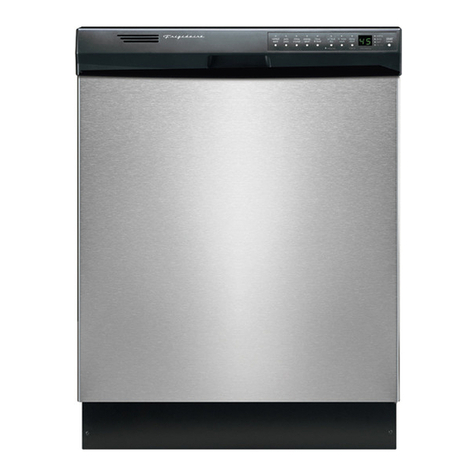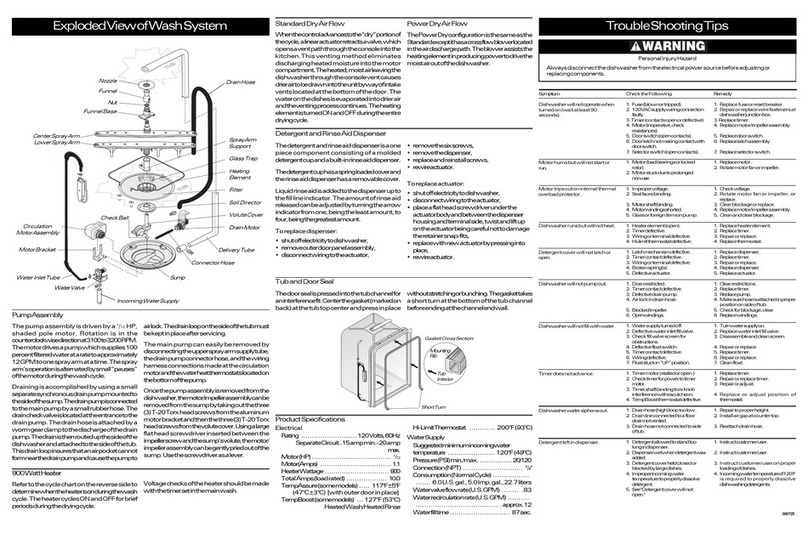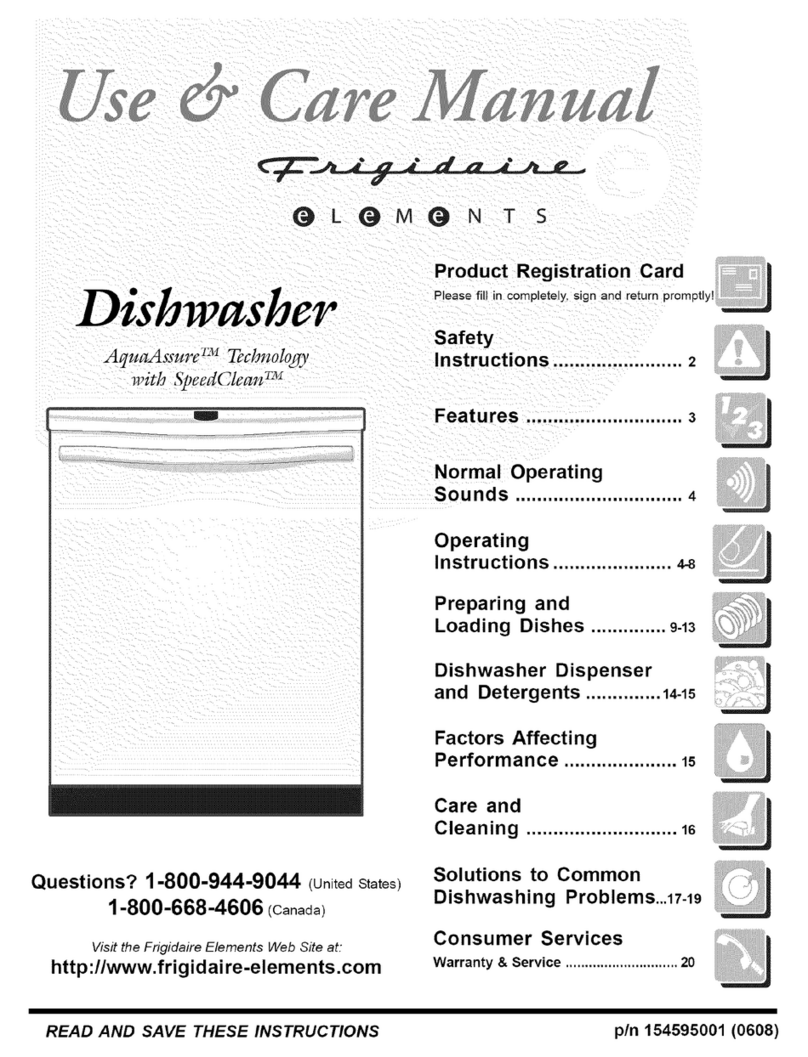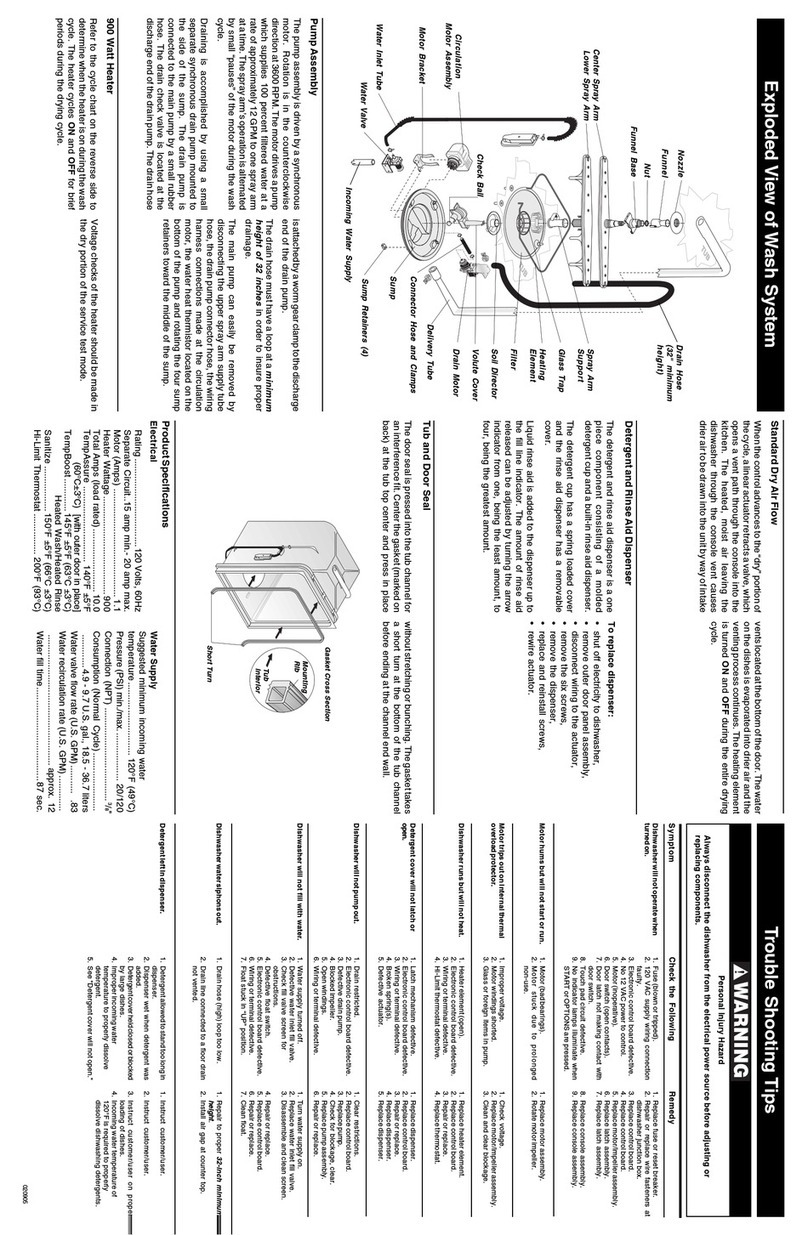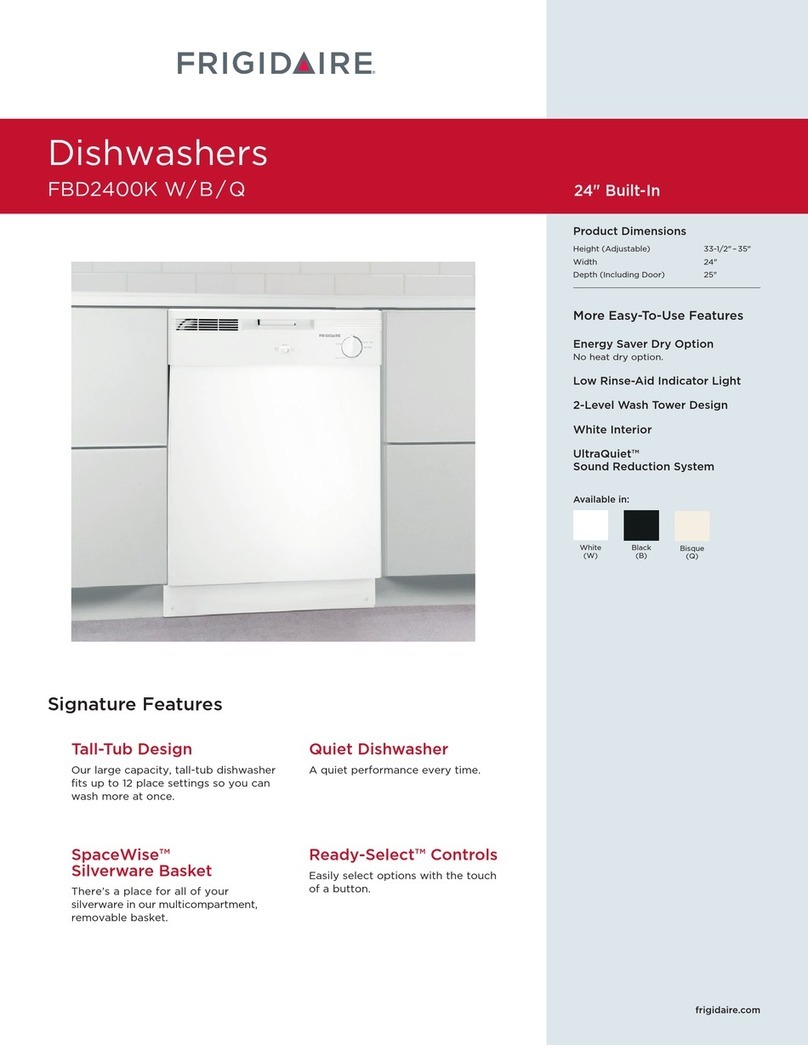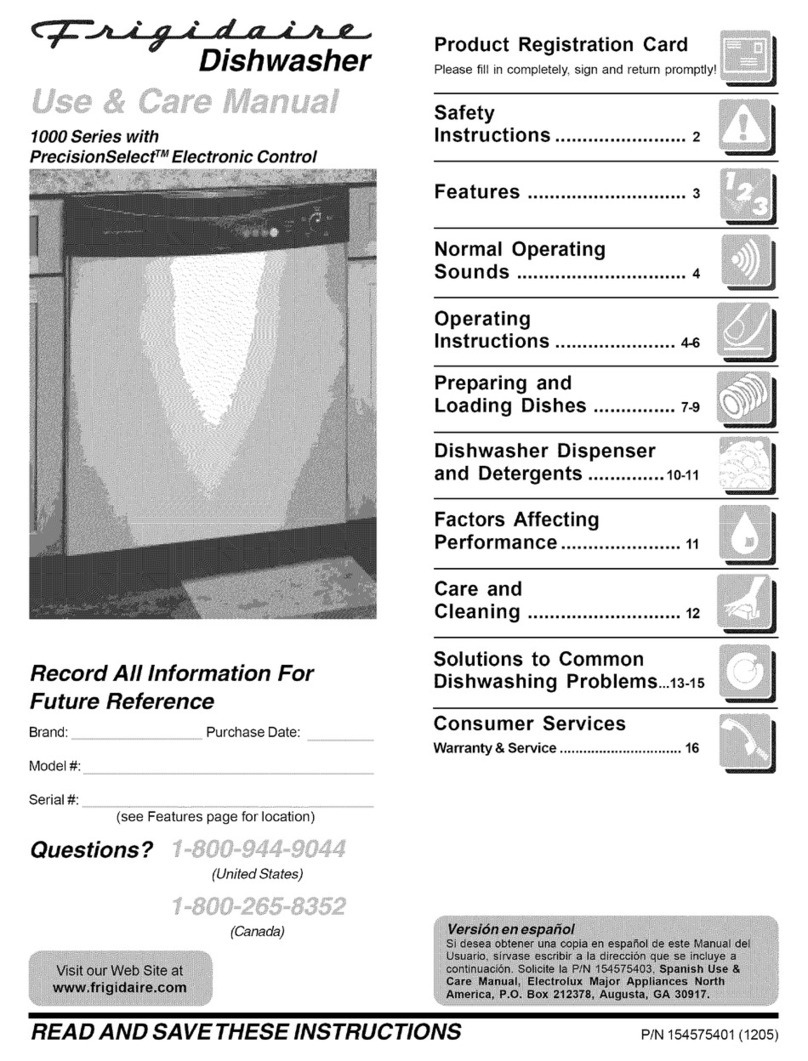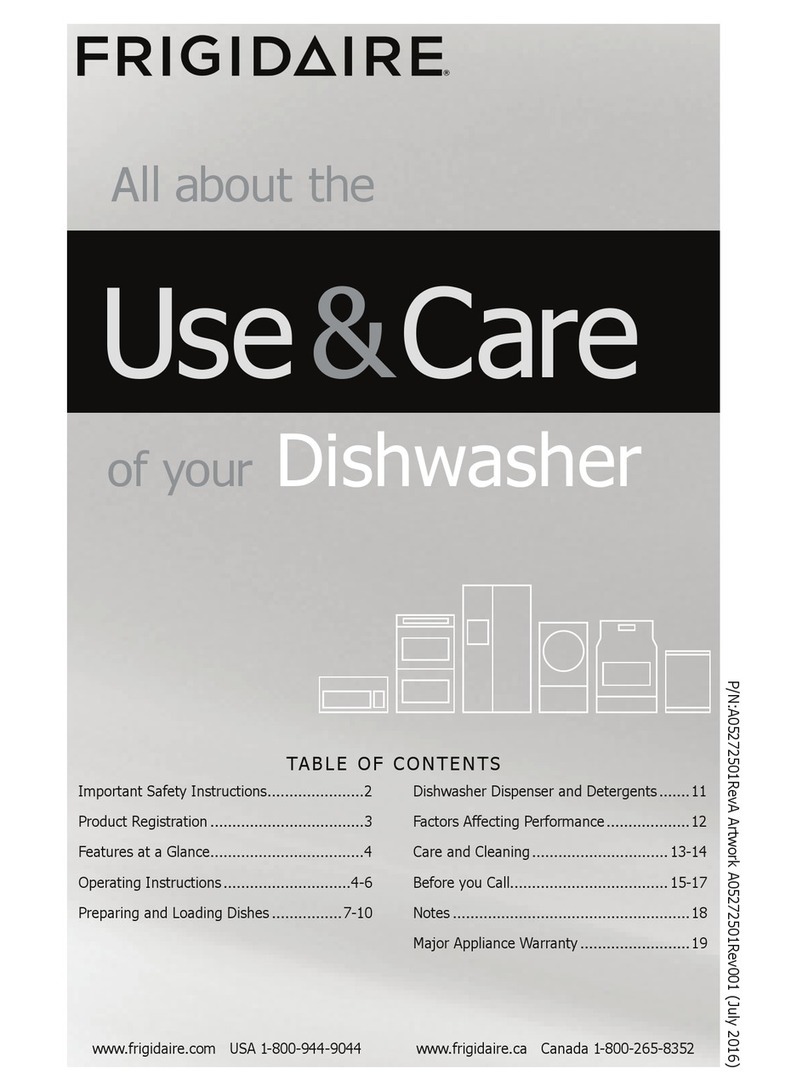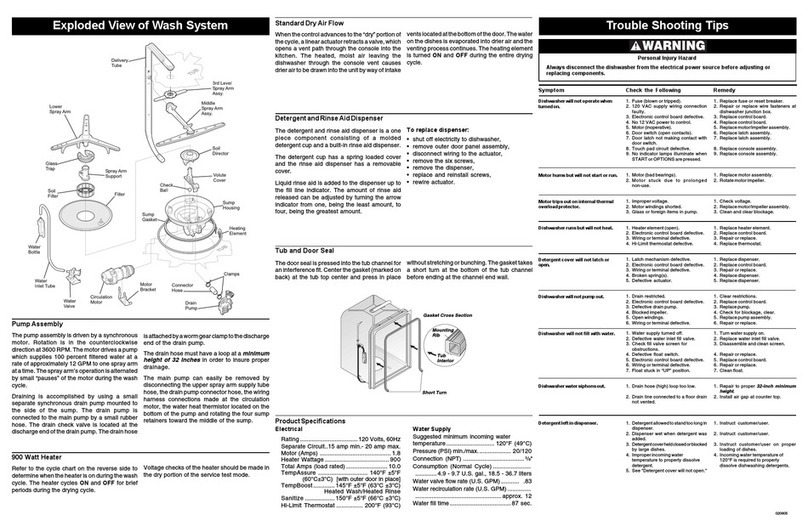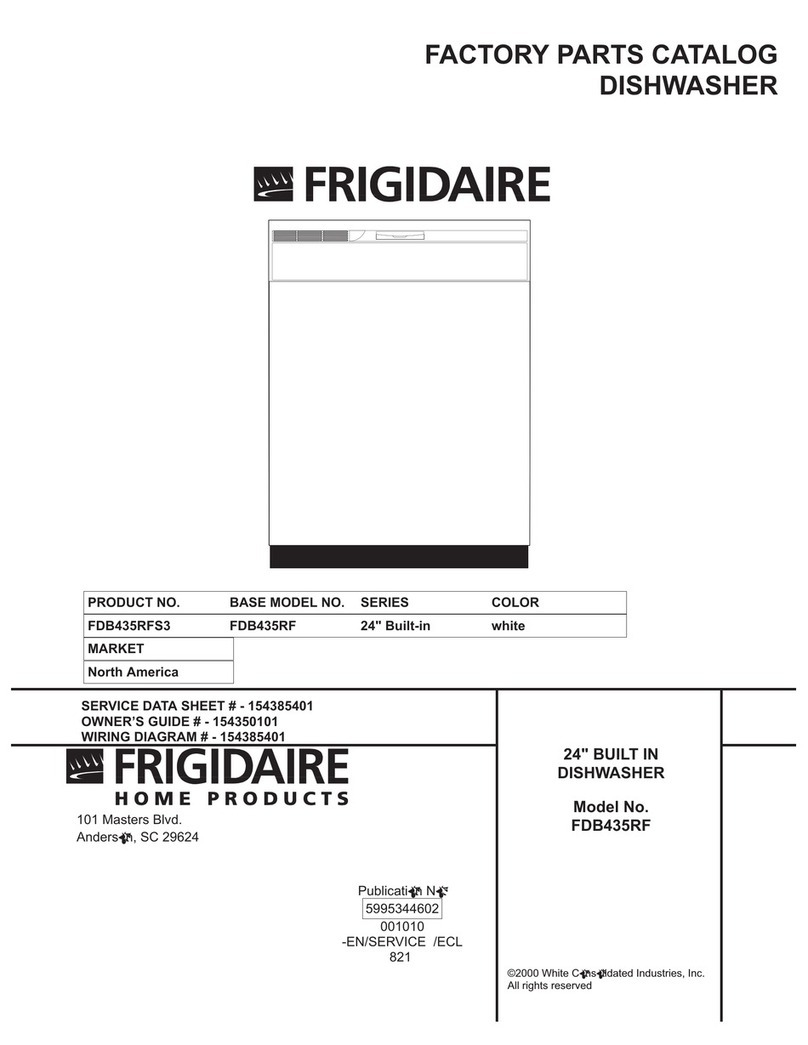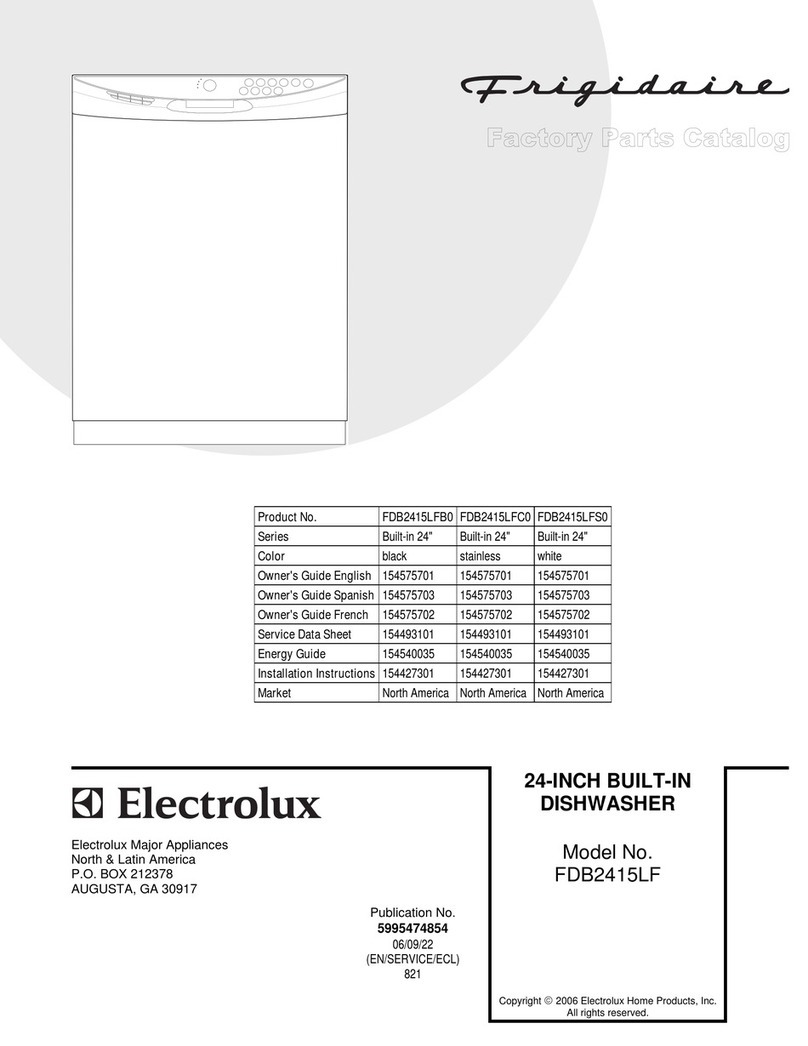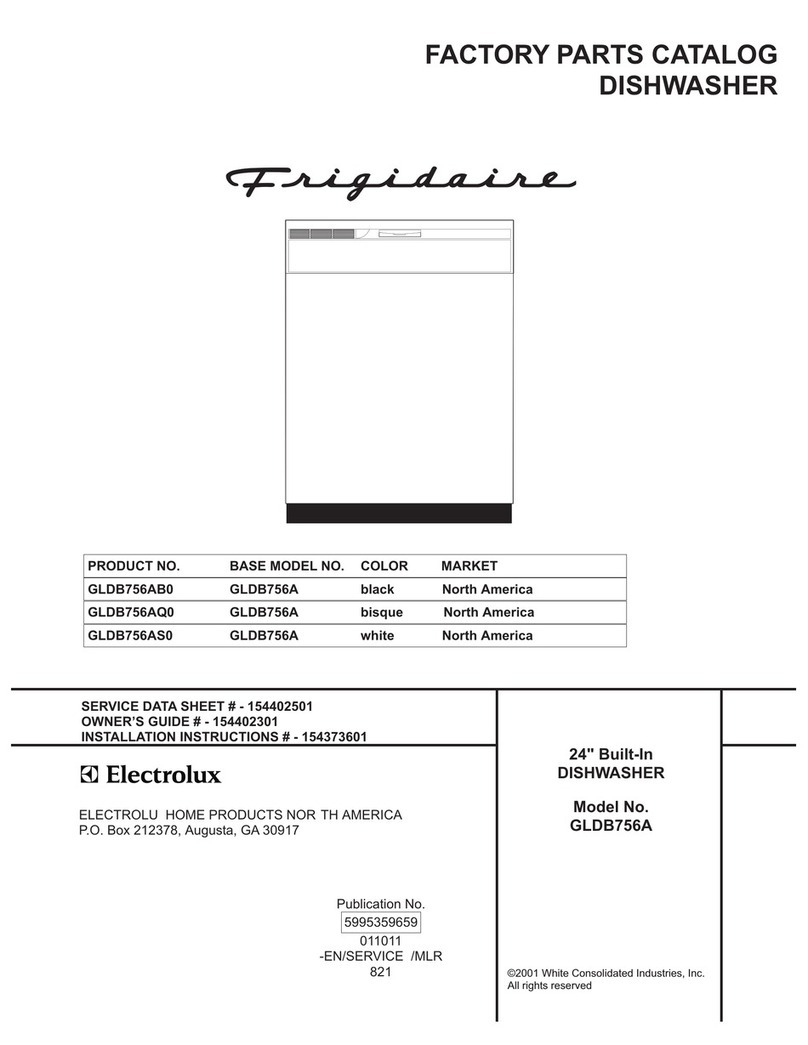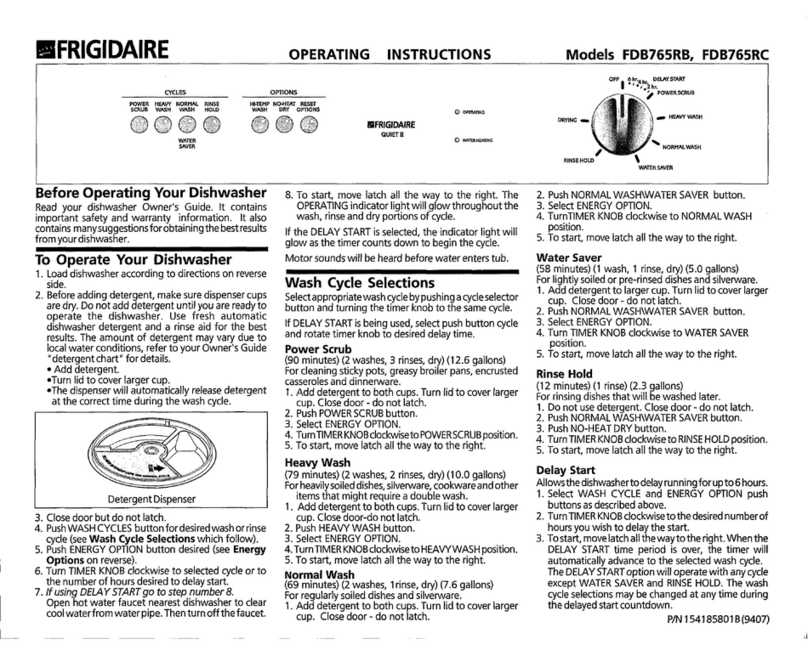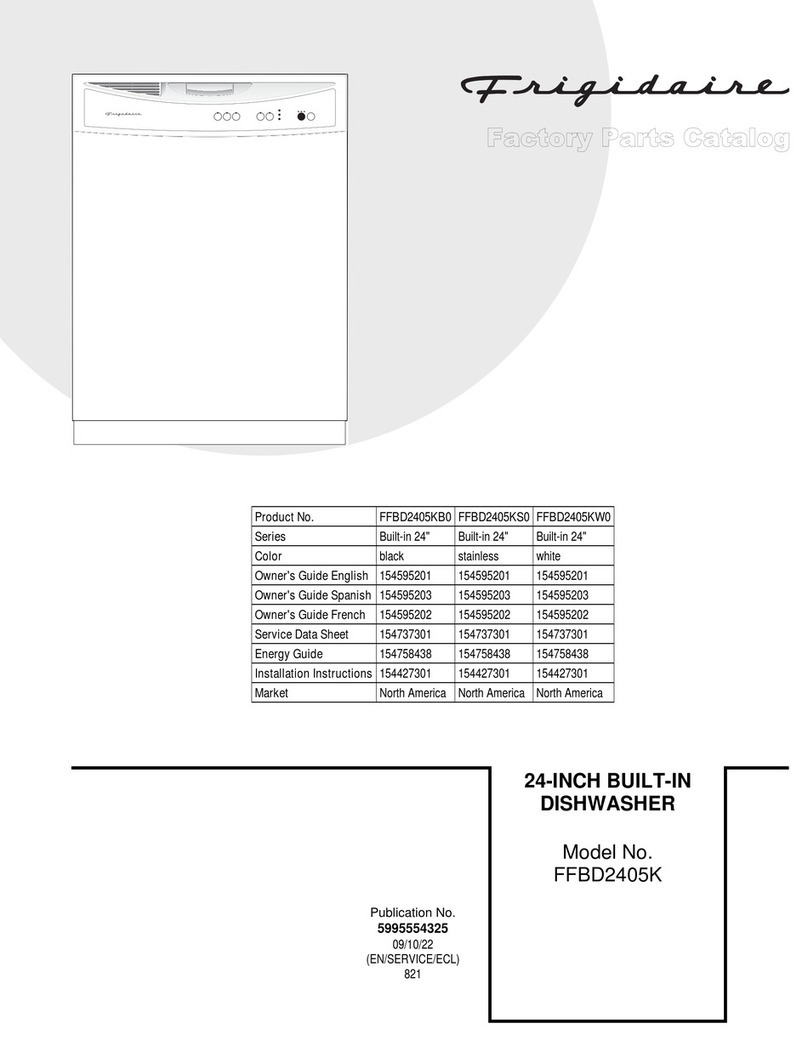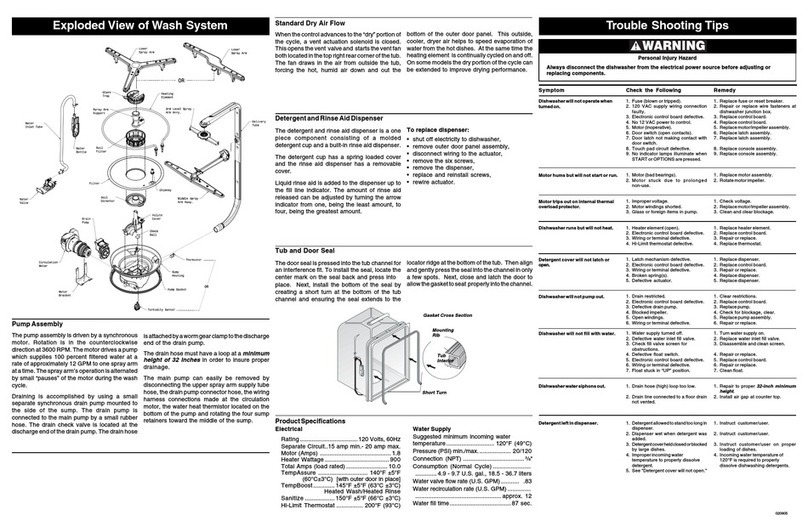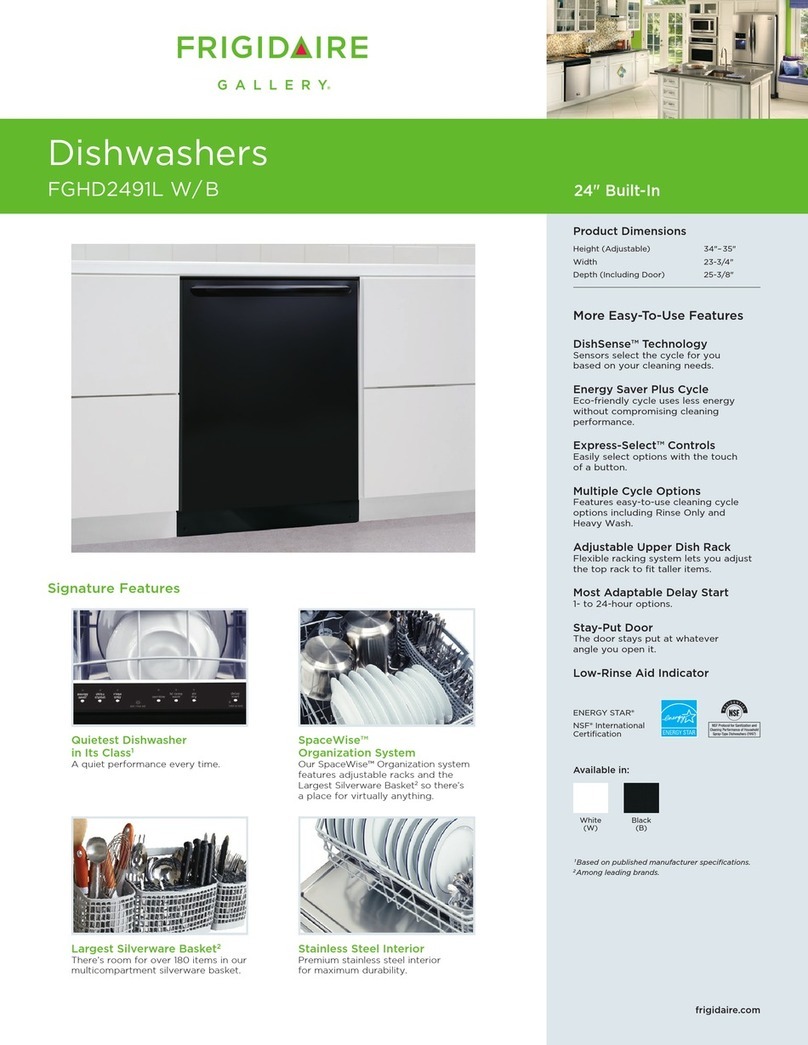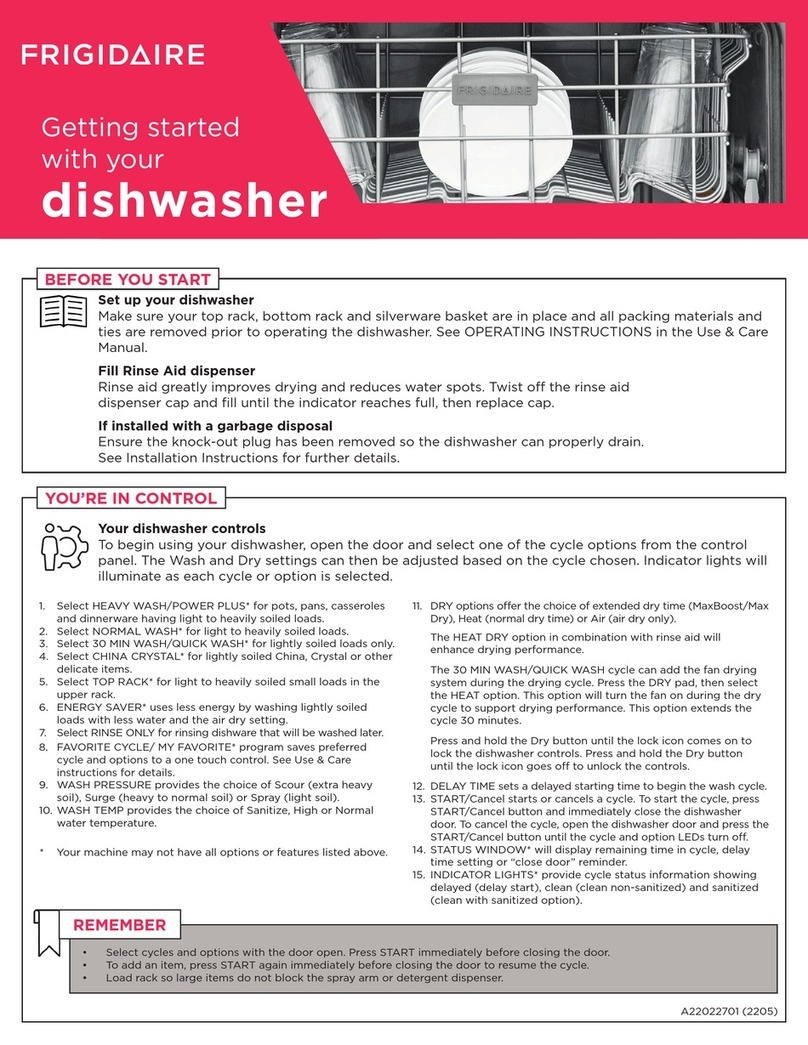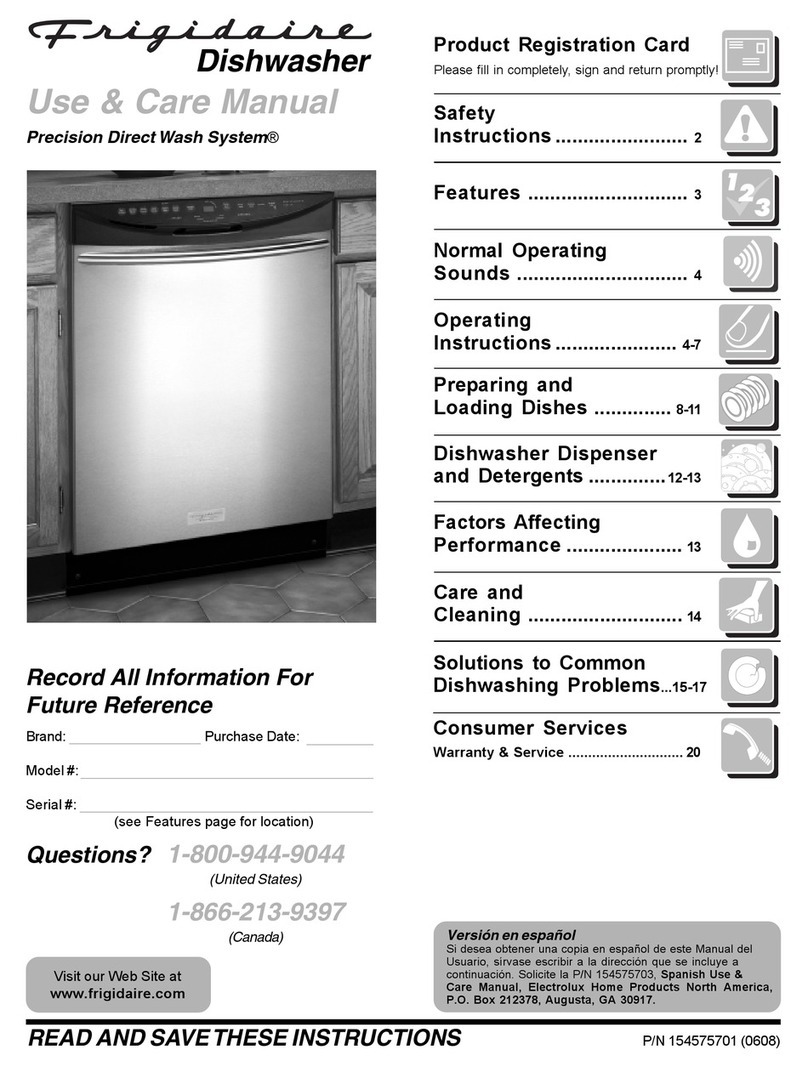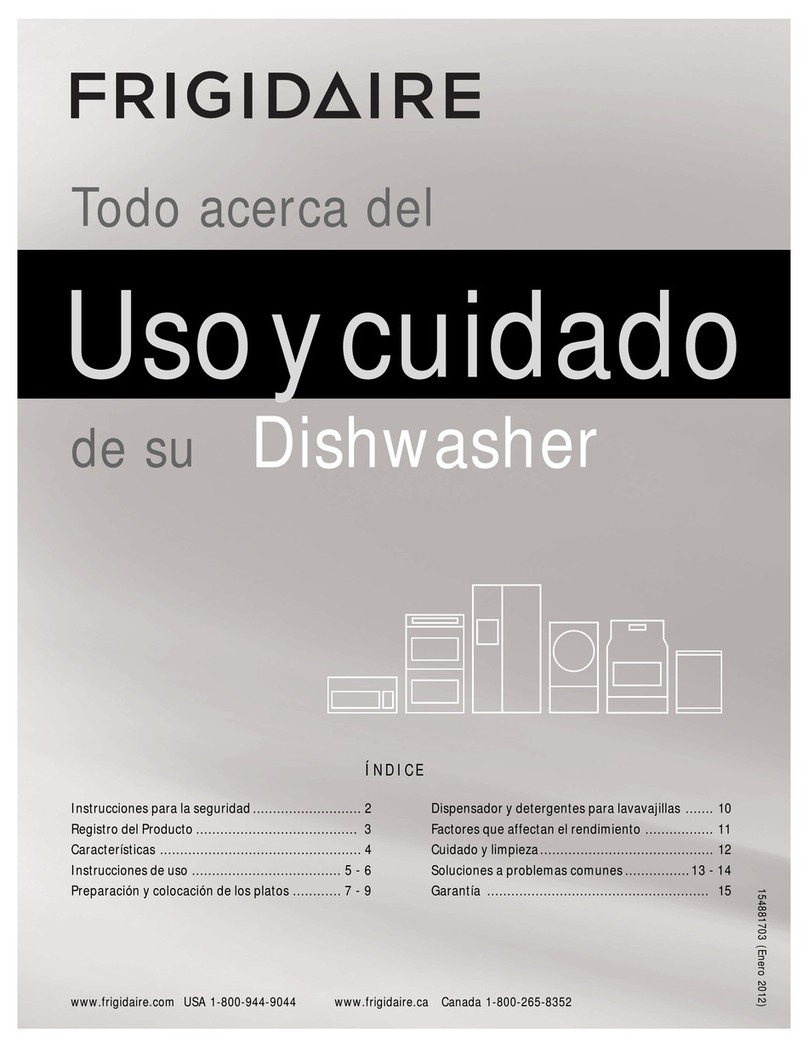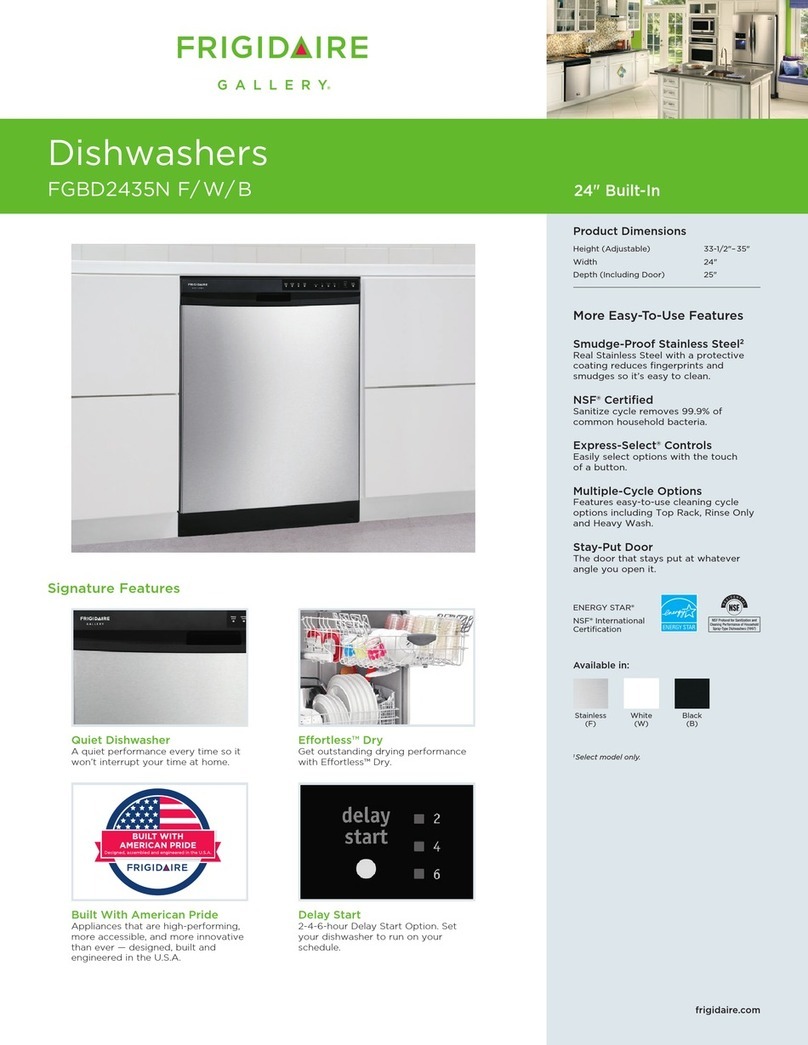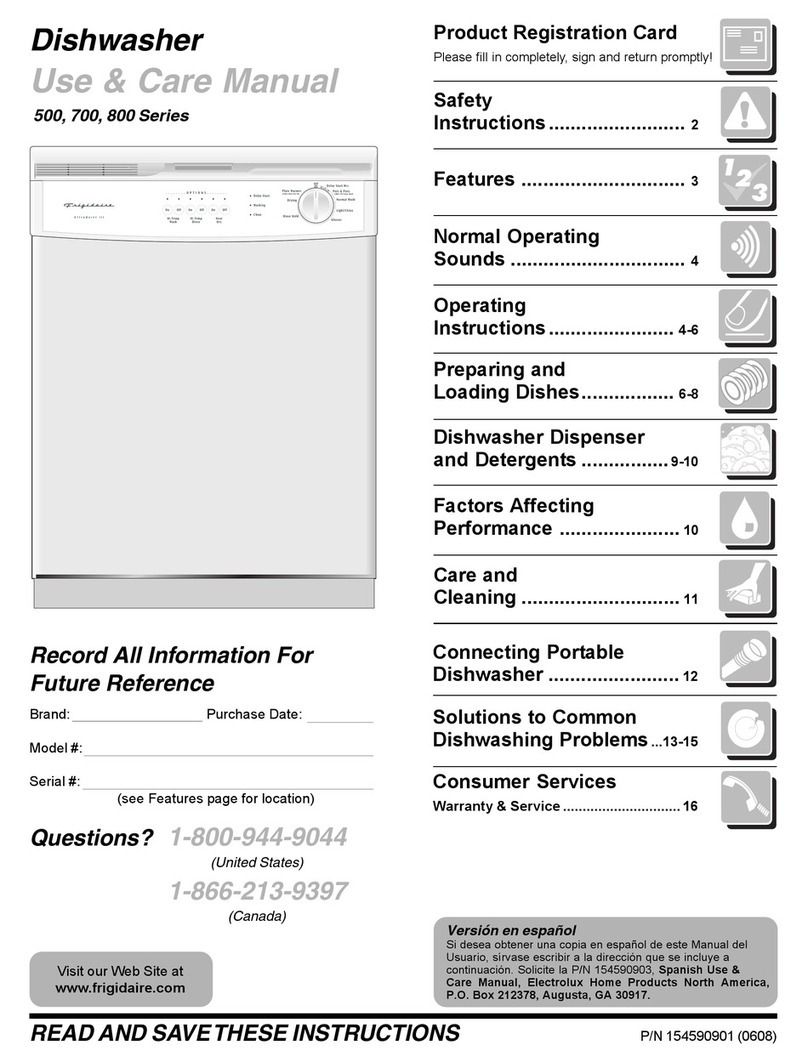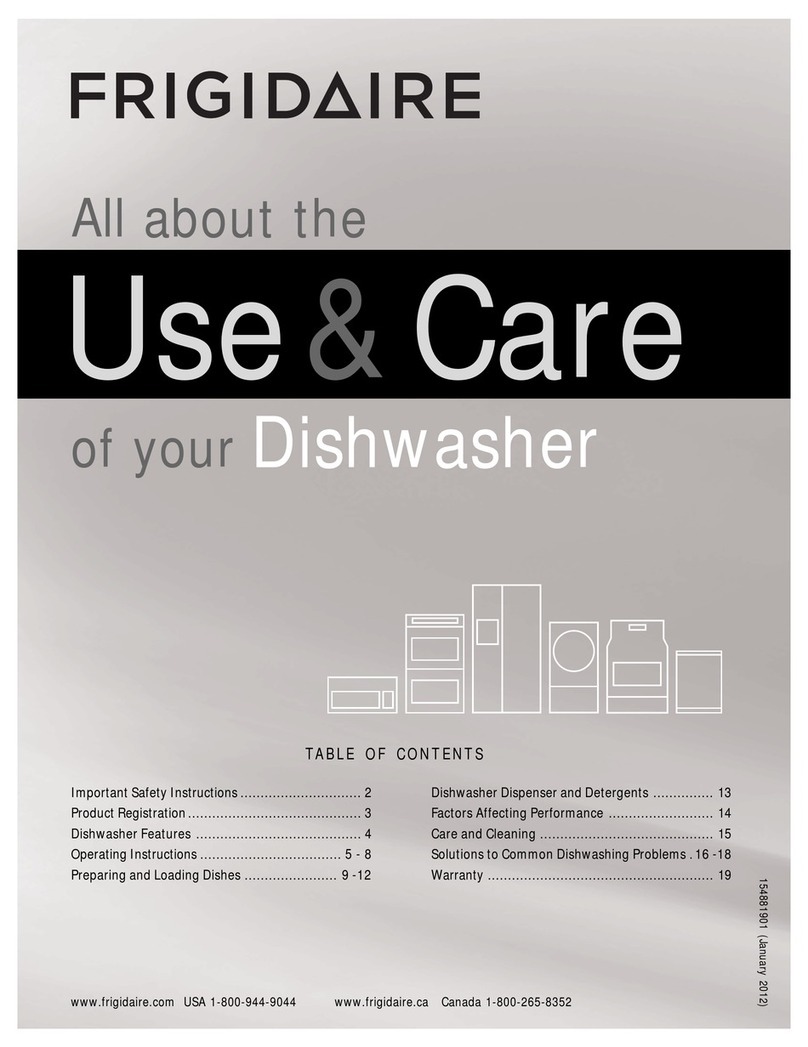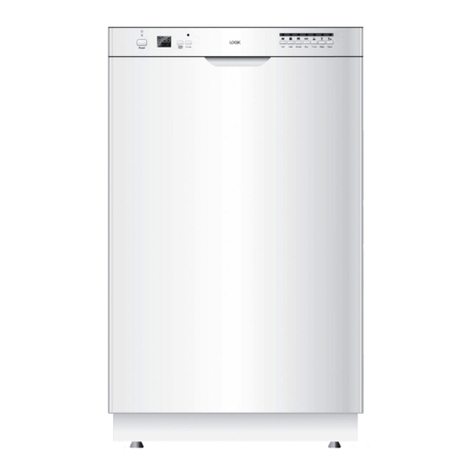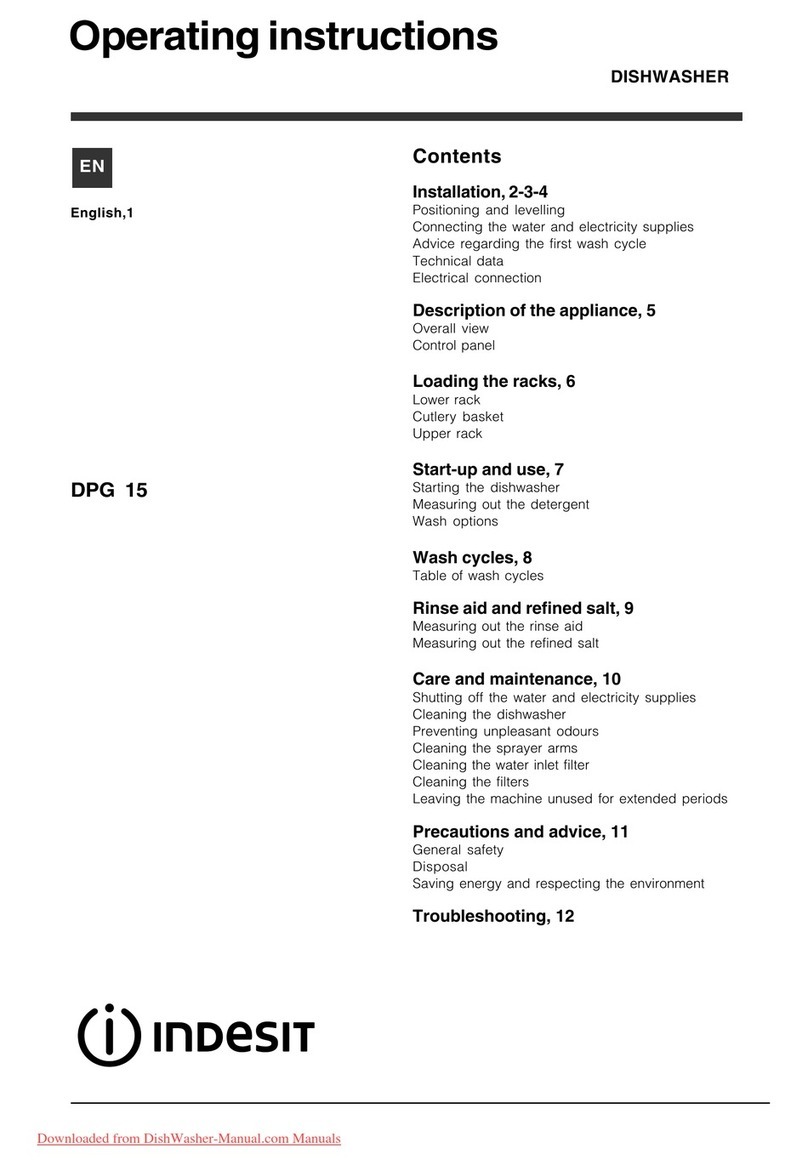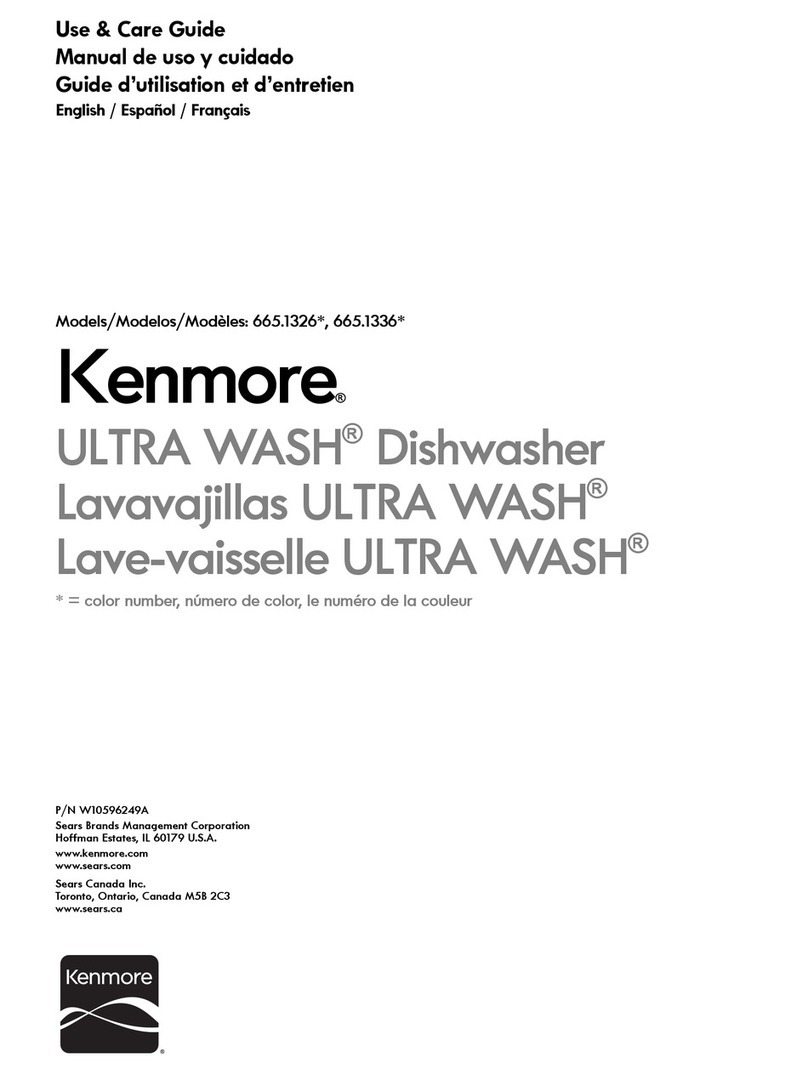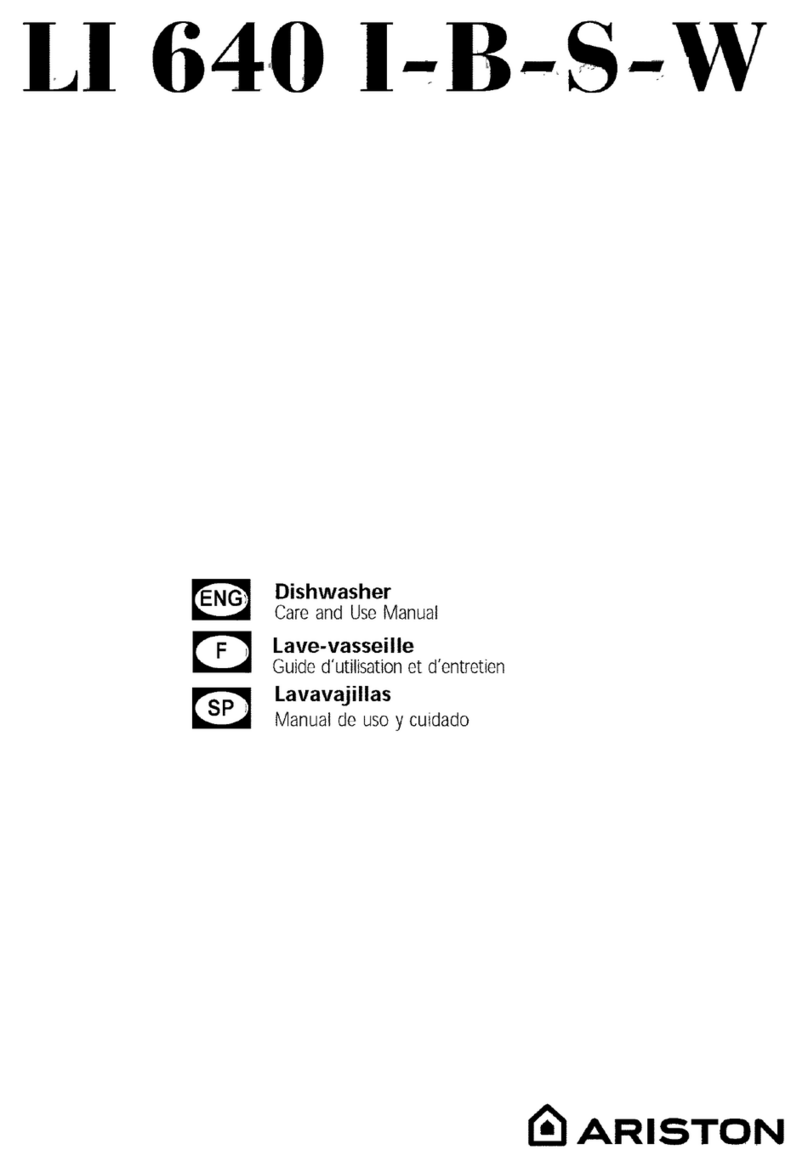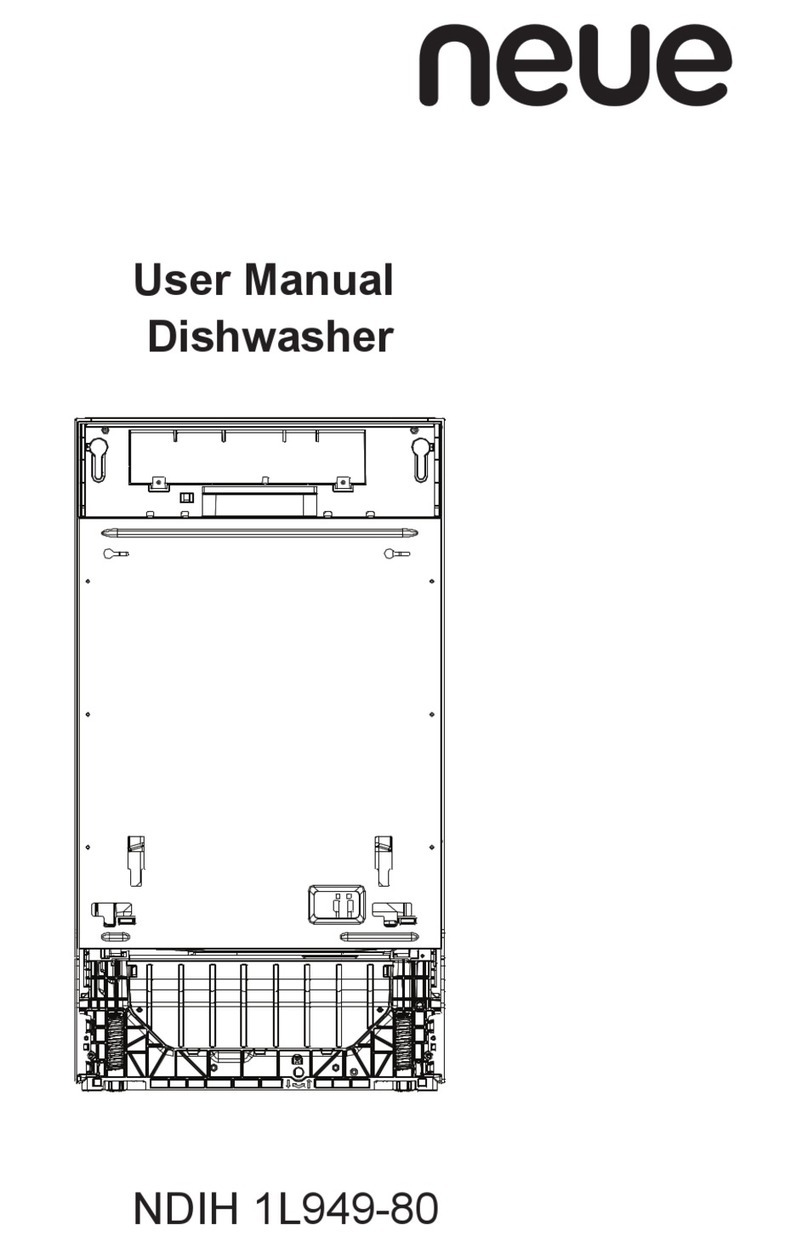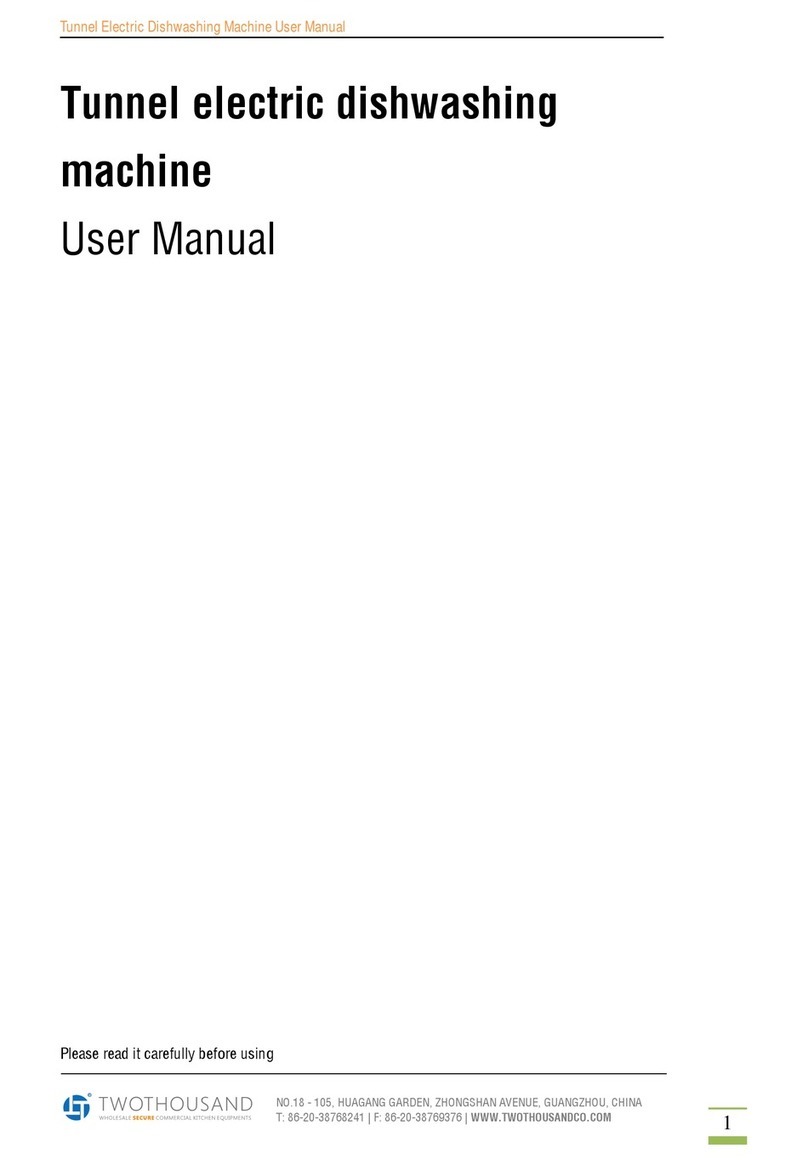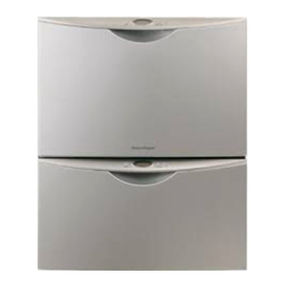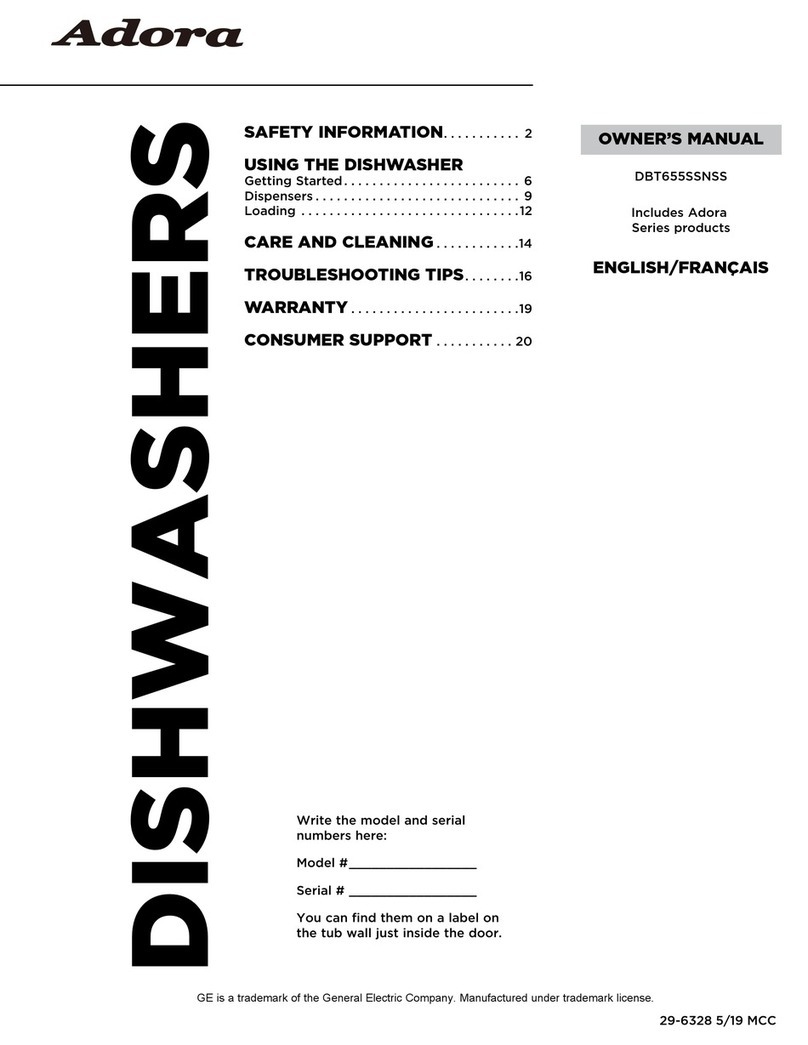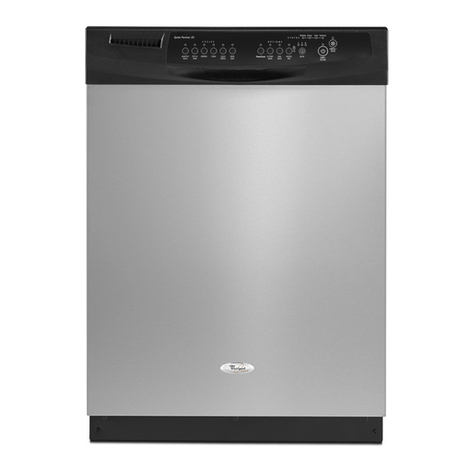
15
Keep your bill of sale, delivery slip or some other appropriate
paymentrecord.Thedateon the billestablishes the warranty
period should service be required.
Consumer Services
Versión en español
Si desea obtener una copia en español de este Manual del
Usuario, sírvase escribir a la dirección que se incluye a
continuación. Solicite la P/N 154314402.
Spanish Use & Care Manual
Frigidaire Home Products
P.O. Box 212378
Augusta, GA 30917
For Parts and Service
Contact Frigidaire Home Products at:
8004444944
Frigidaire Home Products
P.O. Box 212378
Augusta, GA 30917
Dishwasher Warranty
Warrantor: Frigidaire Company, a division of White
Consolidated Industries, Inc.
Covered
Full One Year Parts and Labor Warranty
For one year from date of purchase, Frigidaire
Company will repair or replace any part of the
appliance that proves to be defective in materials or
workmanship.
Limited One Year Parts and Labor Warranty
(State of Alaska only)
All terms stated above apply except all of the technician's travel
costs to the home for service and any costs for pickup and
delivery of the appliance (required because of service), are
excluded.
Extended Limited 2nd Year Warranty
For two years from date of purchase, Frigidaire Company will
provide a replacement (or functional equivalent), for any part
in the water distribution system that proves to be defective in
materials or workmanship. Associated inlet and drain plumbing
parts are not included. The consumer must pay for all labor
and service charges, and the cost to ship the part(s) to the
nearest authorized servicer.
Extended Limited 2nd-5th Year Warranty
(Electronic Controls and Nylon Racks) For models with
electronic controls, provide a replacement electronic control
that fails because of a manufacturing defect. For models with
nylon-coated racks, provide a replacement nylon-coated rack if
the original upper or lower nylon-coated rack peels or rusts
because of a manufacturing defect. The consumer will be
responsible for cost of shipping the replacement part(s) to the
nearest authorized servicer, and for all labor and service
charges.
Extended Limited 2nd-10th Year Warranty
For ten years from date of purchase, Frigidaire Company will
provide a replacement tub or door liner if the original tub or
door liner fails to contain water because of a manufacturing
defect. Door seals are not included. The consumer must pay
for all labor and service charges, and the cost to ship the
replacement part(s) to the nearest authorized servicer.
Warranty(continued)
Not Covered
1. Service calls where the problem is not the fault of the
product. Examples that apply to various product
types include but are not limited to the following:
a. Service calls to remove shipping devices/packing
materials; to level product; to correct leaks at water inlet hose
connections; to correct improper placement of drain hose in
drain; to turn gas supply line on; to correct an improper
exhaust system or to connect product to an exhaust duct; to
advise user on proper setting of controls or on proper use of
product; to correct installation of product; to replace owner-
accessible light bulbs or fluorescent tubes.
b. Service calls where the problem is due to house wiring or
improper voltage supply; a blown fuse or tripped circuit
breaker; a slow or backed-up drain; a weak or spongy floor;
insects, rodents or pests; frozen water lines in product or
house; improper power cord connections to product;
blockage or restrictions in house exhaust duct or hood;
product installed outside, exposed to elements.
2. Damages due to commercial use or from product being used in
dwellings with multiusers (such as in community-type
complexes).
3. Damage to product caused by misuse, fire, flood, acts of God, or
by using parts and/or service not authorized by Frigidaire or one
of its servicers.
4. Consequential or incidental damages such as property damage
and incidental expenses resulting from any breach of this
written or any implied warranty. Note: Some states do not allow
the exclusion or limitation of incidental or consequential
damages, so this limitation or exclusion may not apply to you.
5. Expenses to make product accessible for servicing (for instance,
removal of cabinets, cabinet doors or trim).
6. Service calls to products with serial plates that have been
removed, altered or cannot be read.
Conditions
1. This warranty gives you specific legal rights; you
may have other rights, which vary from state to state.
We authorize no one to change or make additions
to this warranty. This warranty applies only in the
50 States of the U.S.A. and Puerto Rico.
2. All service and installation must be performed by Frigidaire
Home Products or one of its authorized servicers per the terms
stated in this warranty. Use only genuine Frigidaire Home
Products parts.
3. Product features/specifications are subject to change without
notice.
4. If the product cannot be repaired, a usage charge will be
incurred.
5. The consumer must:
properly use and care for product.
read and follow all warning/safety instructions and all other
instructions provided with the product.
have product properly installed according to all local,
plumbing, electrical and/or gas codes. Product must be
properly connected and grounded to a power supply of
sufficient voltage.
have product moved out of place and back into place (if
moving the product is essential for service). If product
cannot be moved by the consumer, the servicer will not be
liable for damages to the floor or to the finish after
installation.
Visit Frigidaire Companys Web Site at
http://www.frigidaire.com
















